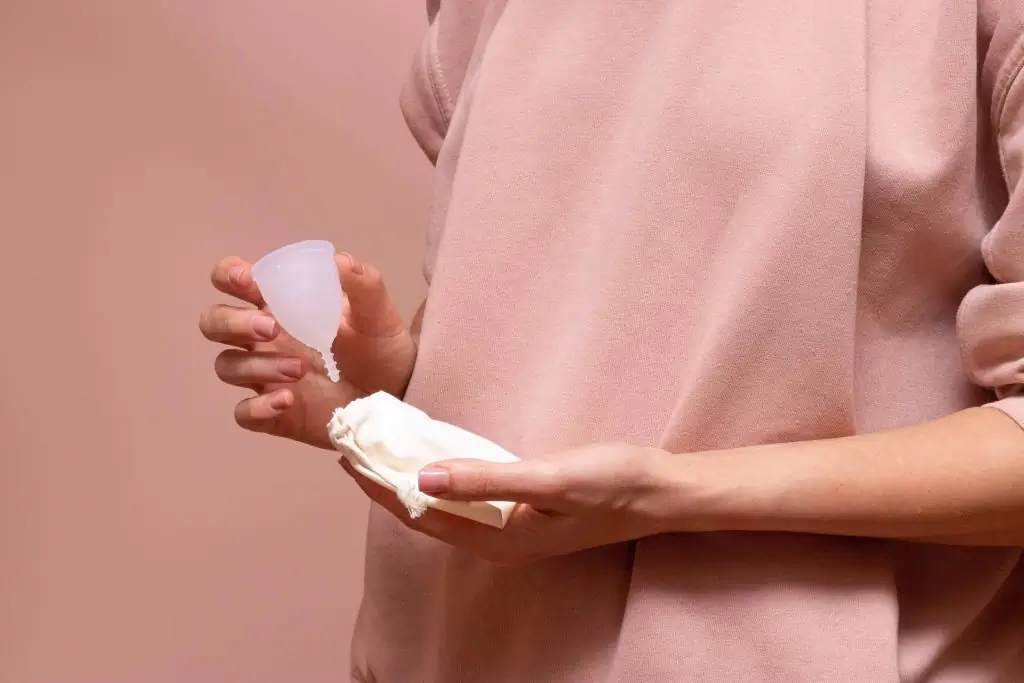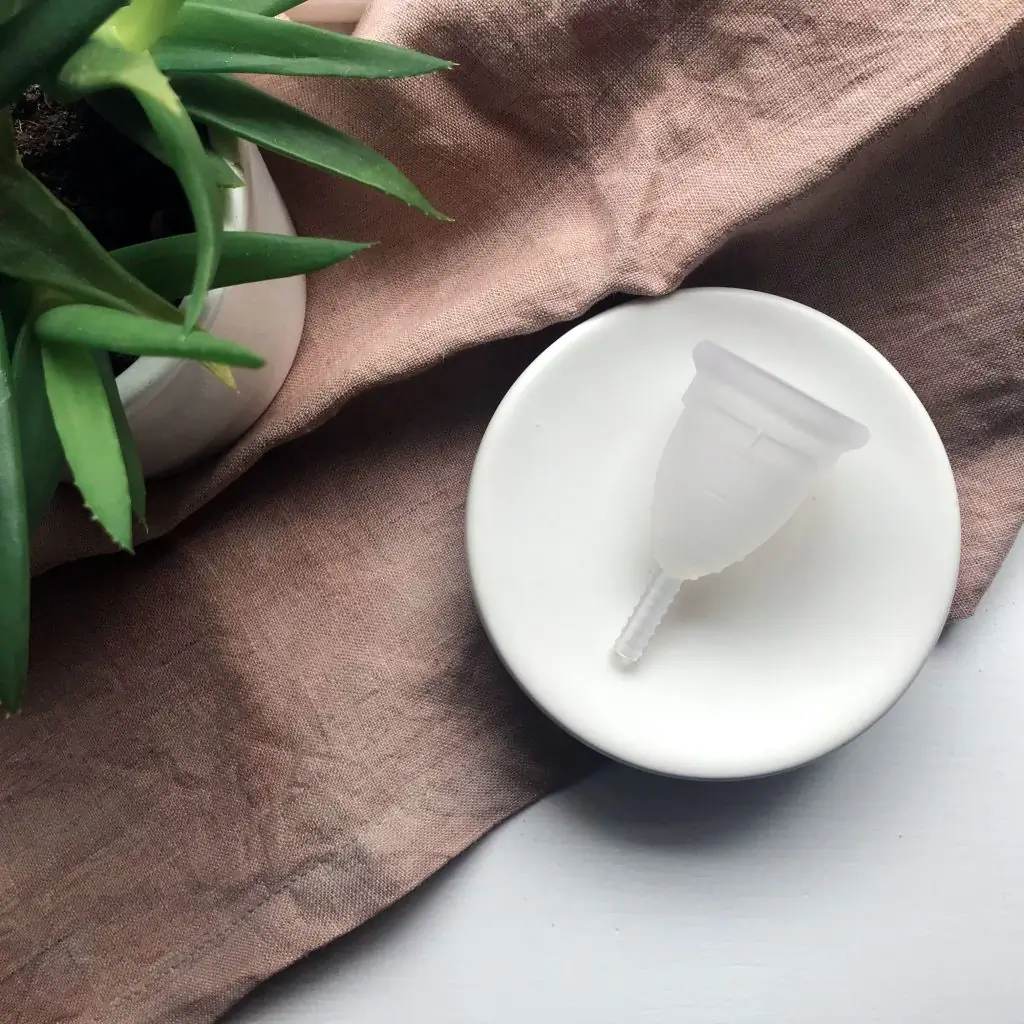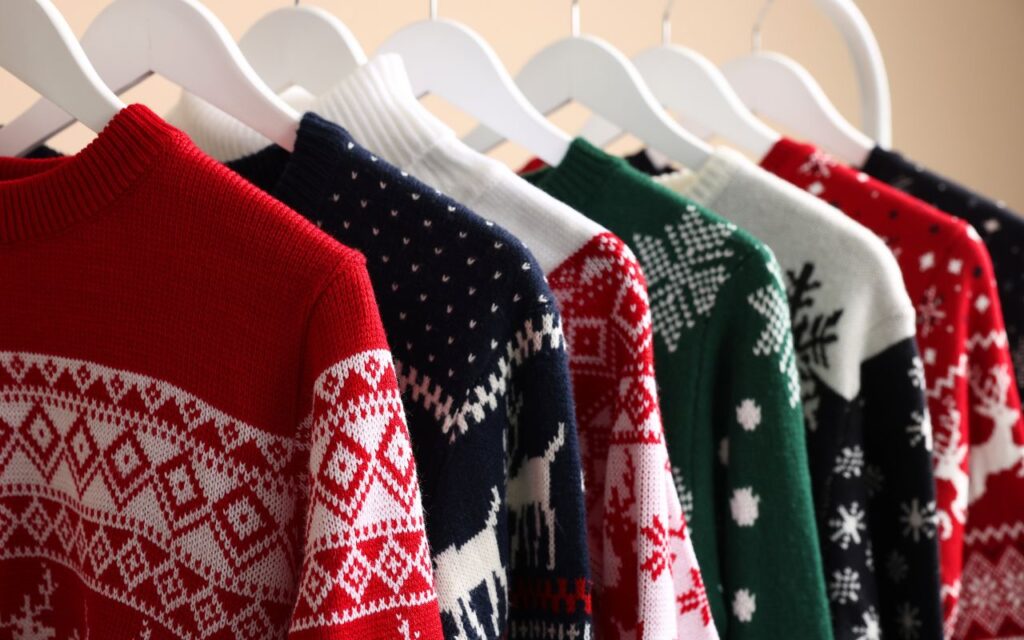
I’ve never felt like an early adopter. To me, the term conjures somebody trendy (not me), with a high risk tolerance (not me, either!). Definitely somebody younger than I am. Still, I’ve come to realize there are things I adopted before most people I know: a robot vacuum cleaner, renting cars through Turo, and using a menstrual cup.
I can tell I’m an early adopter, because when I mention these things other people say, “Really? How does that work?” In the case of the menstrual cup there’s usually an extra reaction — a nose wrinkling or gentle shake of the head — and the follow up, “I find that scary,” or “Is it icky?”
Short answer: no. But if you want the longer answer, you’re in the right place. I recently sat down for a lovely chat about all things menstrual cup-related with Kat Plouffe of Only sustainable period products.
We talked about the pros and cons of menstrual cups (also known as period cups), and how to find the right one for you.
And we started with the most important question …
What is a menstrual cup?
I’m just going to put Kat’s answer here, because it’s a great one:
“A menstrual cup is a device that you insert into your vagina to capture menstrual fluid for up to 12 hours. Then you can remove it — my favourite way is in the shower — clean it, reinsert it, and once you’re done your period you wash it at the end of your cycle.”
To me that explanation is simple, straightforward, and not that scary, but I know some of you will still be unsure. I asked Kat why she thinks that is.
Why do some women hesitate to try menstrual cups?
Kat has a few theories about what causes this reluctance:
- It’s cultural: “I think it’s a North American thing — there’s a clinical or sanitary fear of dealing with your own vagina,” she says. “It’s such a taboo area to talk about.”
- It’s physical: Women may be uncertain about insertion. “It looks a little bigger than a tampon,” Kat says.
- It’s practical: “You can’t just throw it in the garbage and forget about it,” she says.
“You have to clean it; you have to maintain it. You have to be best friends with it for about a week, every month.”
“The standard method of cleaning these days is boiling it on your stovetop, and I can imagine students in a dorm room not being too comfortable boiling their menstrual cup on the stove, in front of their peers.“
If any of these resonate with you, let’s get into the pros and cons of using a menstrual cup to offer clarity and help you figure out if the cup is really for you.
What are the benefits of using a menstrual cup?

Cost savings
Most menstrual cups cost $30-40 and last for five to 10 years. A box of tampons may cost less on day one, but you start saving money pretty quickly.
Practicality
Menstrual cups are designed to be worn for 12 hours. That means, unlike with a tampon, you can get through most of your day without having to empty your cup.
“You almost forget you’re on your period when you’re wearing a menstrual cup.”
Kat Plouffe
Waste reduction (the environment)
Kat says the average menstruating person uses somewhere between 5,000 to 9,000 tampons over a 10-year period, versus one or two menstrual cups in that time. “That’s a lot less stuff in your garbage.”
“Economically, practically, and environmentally, it’s got some great benefits,” Kat says. However, she goes on to temper that statement, “In some ways, it’s very practical, in some ways, impractical,” and that, of course, is what we’ll discuss next.
What are the drawbacks of using a menstrual cup?
Sizing
“I’d say the number one drawback, especially for first-time users, is knowing your size. There’s no international standardization for the sizing of menstrual cups.” Kat explains some brands use an “A, B, C” scheme. For others it’s “1, 2, 3,” while at Only they label their cups small, medium, large.
While many cups try to set parameters — for example, if you’re over 30 and have given birth, you should use a large, or if you’re over 30 and haven’t had children you should use a medium — Kat acknowledges those aren’t always exact. “There are rules that don’t apply to every cervix, and every cervix is a different height and length and sensitivity.”
Cleaning
Not everybody has easy access to running water which makes washing and/or boiling a menstrual cup difficult. And even if you have running water at home, Kat points out, “Our public infrastructure is not set up to properly wash your menstrual cup in public. Not everyone’s comfortable going to a public bathroom stall, then getting out of the bathroom stall and rinsing their cup.”
I know what you’re still thinking, and I know it because it’s the big thing people ask me about — does it leak? So, here we go …
Let’s talk about leaks, baby
I’m going to start with Kat’s take on leaks: “I think menstrual cups are the best [product] out there to prevent leakage — if that’s your number one concern with your period, the menstrual cup is the way to go.” With the caveat that your cup needs to fit and be inserted properly, and you shouldn’t wear it for more than 12 hours, Kat calls the menstrual cup, “The best solution for a leak-free period.”
Now my take — can the menstrual cup leak? In my experience, it’s possible. However, I qualify that by reminding you that the whole reason women are so concerned about this topic is because everything leaks. If your cup is very full, there are times when you can move in a way to break the seal and you can have some leakage. The thing is, if your menstrual cup is that full, you would already have leaked through multiple tampons.
So, leaks? Possible.
Fewer leaks than with tampons or pads? If fitted correctly, yes.
Talking about the right fit brings us to our next topic.
How do you find the right menstrual cup for you?
The right fit
Even though a menstrual cup looks basic, it’s surprising how many features you can choose from:
- Material: This can be quite firm or more malleable. Usually cups are made from silicone, but for those with silicon allergies, companies (like Only) also make them using thermoplastic elastomers.
- Removal tab: Some cups come with stems, and some of these can be trimmed to the length you like. Some come with loops, or double loops, or variations on loops, and some come with nothing at all.
- And, of course, as discussed above, there’s the circumference/size.
If these options sound overwhelming, don’t worry! There’s an amazing resource dedicated to getting you the menstrual cup you’ll love. Period Nirvana (Reusable Period Products Menstrual Cups, Discs + More | Period Nirvana) is run by a woman named Kim Rosas who offers guides to size, malleability, and cervix height (including how to find yours) as well as brand/cup reviews. Kat says she’ll often refer customers to Rosas’ menstrual cup quiz (The Best Menstrual Cup Quiz to Find Your Perfect Match | Period Nirvana).
The right company
Helping women know where their product comes from was one of Kat’s driving motivations for launching Only. Because a low-quality cup can give you a bad experience, she urges women to look into the companies they buy from. “You could be wanting to buy a menstrual cup to be more eco-friendly, then buy it from a company or a manufacturer that’s not doing anything good for the environment. If you have questions, go to the live chat, ask their support, use the ‘contact us’ button. The best companies really have nothing to hide.”
Kat’s final sales pitch for using a menstrual cup?
They are very comfortable, especially if you find the right fit. Everyone who joins what we call the menstrual cup club rarely ever goes back because they’re that life-changing.
Kat Plouffe








